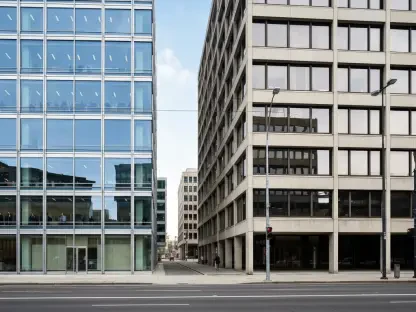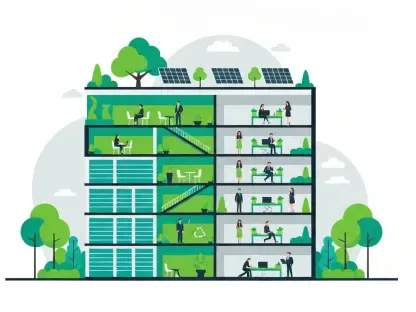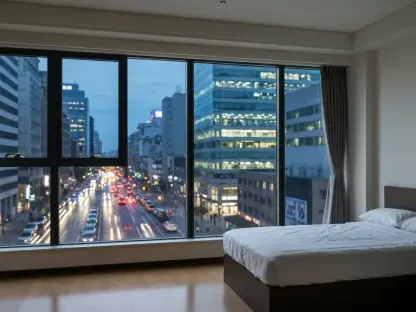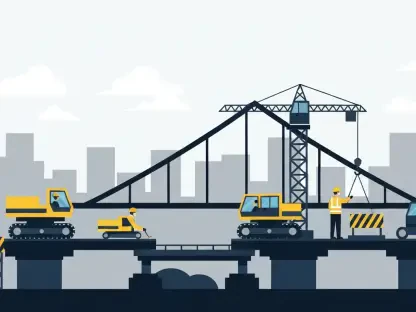In an era where homeownership feels increasingly out of reach for many, a transformative trend known as build-to-rent (BTR) is carving out a significant space in the real estate industry, offering a compelling alternative to traditional housing models that often burden buyers with long-term financial commitments. BTR involves the development of residential communities—often single-family homes or multifamily units—specifically designed for long-term rental rather than purchase, complete with modern amenities like private yards and shared recreational spaces. This approach caters to a growing segment of the population that values flexibility, convenience, and freedom from the financial burdens of a mortgage. With economic uncertainties, shifting demographics, and changing lifestyle preferences driving demand, BTR is not just a niche concept but a potential game-changer. Data from Fixr indicates a staggering 134% increase in BTR home starts over recent years, with hotspots in the South and Southwest, such as Phoenix and Dallas, leading the way. As this model gains momentum nationwide, its impact on housing dynamics demands a closer look.
Decoding the Build-to-Rent Concept
The essence of build-to-rent lies in its ability to meet the needs of a diverse renter base, filling a critical gap between the isolation of apartment living and the responsibilities of homeownership. These purpose-built communities target groups ranging from millennials grappling with steep home prices to retirees seeking to downsize without maintenance hassles. Gen Z renters, just entering the housing market, also find appeal in BTR’s blend of privacy and professionally managed environments. Features such as garages, community pools, and on-site services mimic the perks of owning a home while eliminating the long-term financial commitment. This model thrives in a landscape where mobility is prized, and economic instability often discourages taking on large debts. By offering a middle ground, BTR addresses a pressing demand for housing that aligns with contemporary values of flexibility and reduced responsibility, positioning itself as a vital solution in today’s market.
From an investment and development perspective, BTR presents a robust opportunity with distinct economic benefits that are hard to overlook. Investors are drawn to the promise of consistent rental income, which provides reliable cash flow even in fluctuating markets, alongside the potential for property value growth over time. Developers, meanwhile, capitalize on the efficiencies of constructing multiple units within a single community, slashing per-unit costs through shared infrastructure and centralized management. In certain regions, government-backed incentives, such as tax exemptions or funding programs, further bolster the financial appeal of these projects, enabling developers to maintain competitive rental rates. This combination of steady returns and cost-saving measures makes BTR an attractive proposition for those looking to diversify real estate portfolios or scale operations. As demand for rental housing persists, the economic framework of BTR continues to solidify its place in the industry.
New Horizons for Real Estate Professionals
For those in the real estate profession, the rise of build-to-rent introduces a promising avenue to expand business horizons and forge lasting connections in an evolving market. Agents can tap into fresh revenue streams through commissions tied to tenant referrals and leasing agreements, with some arrangements even offering recurring fees depending on developer policies. Beyond immediate financial gains, engaging with BTR projects fosters valuable partnerships with investors and developers, granting early access to emerging inventory and paving the way for repeat transactions. Those who establish expertise in this sector stand to gain a competitive edge, as they can guide clients through a relatively untapped segment of the housing landscape. By aligning with this trend, real estate professionals can diversify their offerings and build a reputation as forward-thinking advisors in a space poised for significant growth.
Navigating the BTR landscape, however, comes with its share of obstacles that require strategic adaptation and foresight from real estate agents. One notable challenge is the often lower commission structure compared to traditional property sales, which can impact profitability on individual deals. Additionally, restrictions set by developers or limited visibility of BTR listings on local Multiple Listing Services (MLS) can hinder access to opportunities. Another consideration is that this model may not align with the goals of clients who prioritize building equity through ownership, necessitating careful client segmentation. To overcome these hurdles, agents must focus on cultivating strong networks with industry stakeholders and staying abreast of market shifts to identify viable openings. By proactively addressing these limitations, professionals can position themselves to capitalize on the unique advantages that BTR offers while mitigating potential downsides.
Evolving Housing Trends and BTR Innovations
The surge of build-to-rent reflects a profound transformation in housing preferences, driven by broader societal and economic currents that challenge the conventional allure of homeownership. Rising property prices, coupled with a growing inclination toward flexibility among younger generations and remote workers, have fueled a shift toward rental-focused living solutions. This trend also resonates with older adults who seek low-maintenance lifestyles without sacrificing space or comfort. BTR’s alignment with these dynamics underscores its role as more than a temporary fix—it’s a structural evolution in how living spaces are conceptualized and consumed. As financial barriers to buying a home persist, BTR communities are increasingly viewed as a critical component of the housing ecosystem, catering to an expanding demographic that prioritizes mobility and reduced obligations over traditional ownership models.
Innovation within the BTR space further amplifies its potential to address pressing housing shortages, particularly through creative repurposing of underutilized structures. Developers are transforming non-residential properties—such as outdated hotels, vacant schools, and decommissioned factories—into vibrant rental communities, often at a fraction of the cost of new construction. These adaptive projects not only breathe new life into neglected spaces but also provide scalable solutions in both urban and suburban settings where demand for affordable housing remains high. Such ingenuity highlights BTR’s versatility, allowing it to integrate seamlessly into diverse markets and adapt to varying local needs. As this trend continues to unfold, its capacity to innovate ensures that BTR will likely remain a dynamic force, reshaping real estate by offering sustainable and accessible housing options for a wide array of renters.
Charting the Future of Housing Solutions
Reflecting on the journey of build-to-rent, it’s evident that this model has carved out a meaningful niche by addressing real gaps in the housing market with a renter-centric approach. Its growth mirrors the struggles of many who find homeownership elusive amid economic pressures, delivering instead a viable path to comfortable, flexible living. Developers and investors have seized on the steady returns and efficiencies it offers, while real estate agents have discovered new ways to connect with clients and expand their reach. Even as challenges like modest commissions and access barriers test adaptability, the momentum behind BTR has never waned. Looking ahead, stakeholders should focus on fostering collaborations across sectors to unlock further potential, advocating for supportive policies, and investing in innovative designs that prioritize renter needs. By embracing these steps, the industry can ensure that BTR continues to evolve as a cornerstone of modern housing, meeting demands with resilience and vision.









